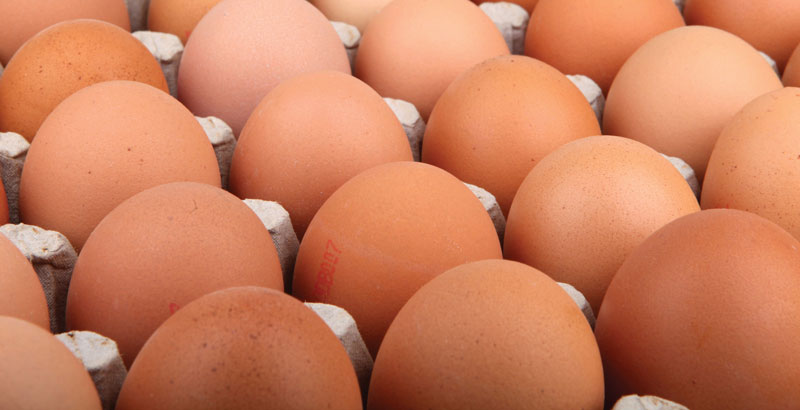
Financial crisis and falling consumption have resulted in the collapse of the Spanish egg market, according to the leader of the country’s egg producers.
Maria del Mar Fernandez Poza, the director of the Spanish producer association, ASEPRHU, told the Ranger that farmers had been unable to cover the cost of production because of a surplus of eggs on the market in Spain. Consumers with less money to spend because of financial crisis were eating fewer eggs, and fierce competition between struggling producer-packers had enabled supermarkets to cut their prices. “There is always somebody willing to give something away, selling cheaper than you, because producers have to sell eggs,” she said.
The plight of Spanish egg producers was covered in a report to the September conference of the International Egg Commission (IEC). Statistician Professor Hans-Wilhelm Windhorst said that, although Spain was one of the European Union’s leading egg and poultry meat producers, and eggs were an important sector for Spanish agriculture, the value of the country’s egg production had fallen by €420 million between 2012 and 2013. “This shows impacts of the recent economic crisis, which severely hit the egg farmers,” said the professor, who pointed to a decline in per capita egg consumption - from 239 eggs in 2012 to 206 eggs in 2013. This was the result of a decrease in family incomes, he said.
“We have had a financial crisis in Spain and consumers have less money,” said Maria del Mar Fernandez Poza. “We have 1,000 egg producers in Spain and 90 per cent of those also pack eggs, so they can sell directly to the supermarkets. There is a lot of competition to sell eggs. There is a small number of supermarkets, so there is nowhere else a producer can go to get a better price. The market for eggs collapsed. Producers couldn’t cover the cost of production,” she said.

Professor Windhorst said that Spain had also been hit by a fall in demand for eggs from Germany. Germany’s decision to ban the use of battery cages in 2010, two years ahead of the rest of the European Union, had resulted in a big increase in imports - up to 8.3 billion eggs. Spain was one of the countries to fill this demand and its layer flock consequently increased in size. Professor Windhorst produced figures showing that in 2010 the number of layers in Spain hit 51.1 million. However, once the switch to alternative housing was completed in Germany, the demand for imports fell sharply, creating a surplus in Spain. “The considerable surplus of eggs led to lasting low prices and high financial losses of the egg farmers.”
The unfolding crisis in Spain coincided with the need to comply with the European Union’s decision to ban the use of conventional battery cages from the beginning of 2012. The economic climate meant that many Spanish producers struggled to fund the switch to enriched cages. “People couldn’t afford to change their units,” Maria del Mar Fernandez Poza. “They didn’t have the money.”
She said that banks were reluctant to fund the necessary investment. Those producers who did invest in new units could not have the same number of birds in the new units because of the regulations, yet they still had the same fixed costs. Figures show that the layer flock fell in size from 51.1 million birds in 2010 to 38.4 million birds in 2013. Maria del Mar Fernandez Poza said numbers had increased slightly in 2014 to just shortly of 40 million birds, but she said that Spain needed to find new overseas markets because of reduced consumption at home and the loss of exports to Germany.
In his analysis of the Spanish crisis, Professor Windhorst said that in 2010 the country’s egg exports had been focused on France and Germany - some two thirds of total export volume went to these two countries. However, between 2010 and 2013 imports of Spanish egg into Germany fell by more than 67 per cent. French imports from Spain fell by more than 28 per cent. To try to compensate for this, he said, Spain had looked to develop new markets outside the EU and to replace the loss of shell egg exports with alternatives such as egg products.
He said in his report that export volume to developing countries, including Africa, increased by 5,400 tonnes between 2000 and 2013. Whilst in 2010 shell eggs for consumption accounted for 82.8 per cent of total export volume, the share dropped to 40.8 per cent in 2013. In that same period, the contribution of hatching eggs to total export volume increased from 4.6 per cent to 33.4 per cent and that of shell egg equivalent for egg products from 12.6 per cent in 2008 to 35.6 per cent in 2011, although share fell back to 25.7 per cent in 2013.
“The increase of egg products for export was able to partly compensate the sharp decrease of domestic demand for these products,” said Professor Windhorst, although he said it had not been enough to stabilise egg prices. The egg industry had drastically cut pullet placements from 36.7 million birds in 2012 to 27.4 million birds in 2014 to try to reduce over-supply in the egg market. Placements increased again in 2014 but they were still seven million down on 2012.
Whether these moves would stabilise prices to enable egg production to return to profitability was “an open question,” he said.
